2013年09月30日
Wasen Finale
The summer session of the Setouchi Triennale ended over a month ago but there is one event that still deserves mentioning: the launching of the tenmasen, a wooden cargo boat traditional to the Setouchi region.

The product of the Triennale summer session, the boat was built by the 3-man team of Douglas Brooks, Koji Matono and Takumi Suzuki in public view, evolving into a real beauty that drew much attention to this swiftly vanishing art. The project dovetailed perfectly with the Triennale’s theme of rediscovering and reviving the precious heritage of this beautiful region.
(For more on the project see Douglas’ blog: http://blog.douglasbrooksboatbuilding.com/ ).
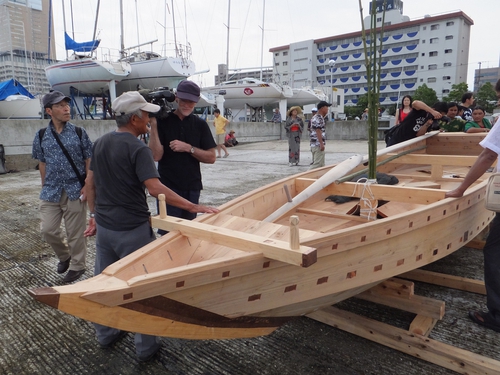
I personally loved the decorative touch of copper plate covering the nail heads and end grain. Looks like a great way to cover up any dents inadvertently made by a hammer, too.
There had been some doubt as to whether the boat would ever really be launched due to red tape and rules. Even when those were overcome, an approaching typhoon threatened to ruin the party. August 30, however, dawned surprisingly fair and about 100 people gathered at Takamatsu’s yacht club to see the boat make its maiden voyage.
Speeches were made and the name “Hoyu” (friendship) was unveiled

Douglas officiated the ceremony, following ancient customs learned from a local 84-year-old boat builder.

Symbolic offerings included ancient coins, a pair of die, figures of a man and woman,
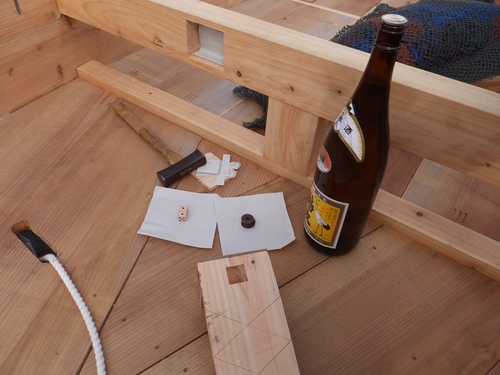
and a fish made of fishing net by The Skin Project.
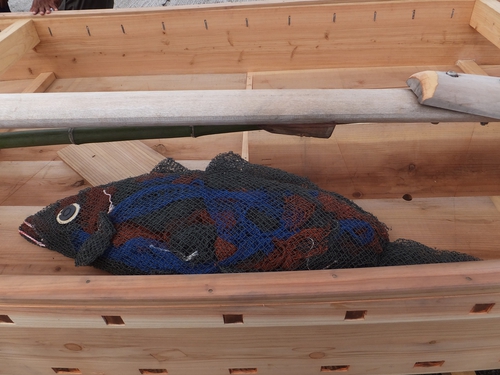
Douglas explained the significance of each but not having a pen and paper I have now forgotten!
Music was provided by Bengali performers using traditional instruments

And by a musical contraption from MEGI HOUSE.

A fanfare of conch shells also joined the chorus.

The tenmasen was carried into the water by a team of hefty university students
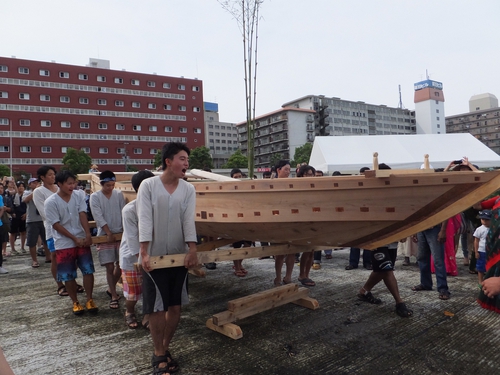
and turned 3 times.
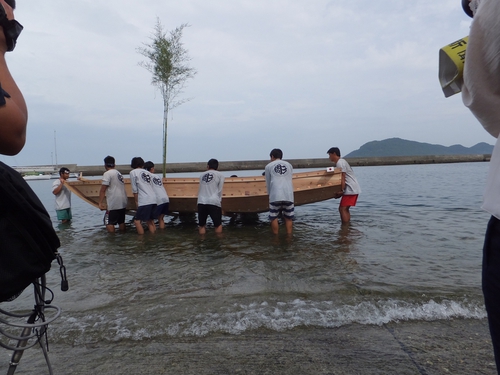
The students then danced what looked like the All Blacks Haka War Dance with a Bengali chant. Very impressive.
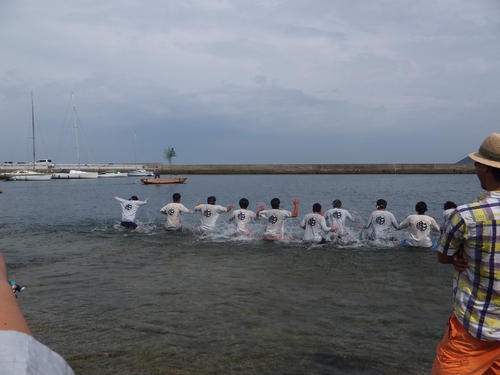
Douglas meanwhile set off to sea, picking up passengers along the way.
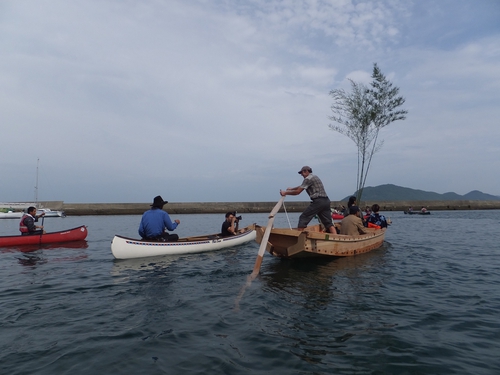
A flotilla of canoes joined the party, taking anyone who wanted for a ride.

One of those was me of course. Hearing that I was from Canada and had been paddling since I was seven, my guide very kindly let me take over from him and stern the canoe. (That's me in the back of the green canoe below.)

All in all, the ceremony was a wonderful celebration of diversity, friendship, and the common bond of love for good craftsmanship and beauty. It was also a great demonstration of the power of the Triennale to transform Takamatsu and the Setouchi region into a hub of intercultural exchange and understanding.
For more on the Triennale, see http://setouchi-artfest.jp/en/
Takamatsu Access:
Takamatsu can be reached by direct flights from Tokyo’s Haneda Airport, by express bus from Kansai International Airport (3 hr), and by direct flights from China and Korea. It can also be reached by taking the bullet train to Okayama and changing to the Marine Liner bound for Takamatsu (runs every 1/2 hour; takes 1 hour). For more info see http://wikitravel.org/en/Takamatsu
Posted by cathy at
15:00
│Comments(0)
2013年09月30日
Megijima Musings
I am very behind on my blog again, due to a massive deadline. Fortunately, I finished just in time for the start of the Setouchi Triennale Autumn Session. Yay!
In this post, let me revisit Megijima. Just 20 minutes by ferry from Takamatsu Port, the island’s beautiful beach, great fishing, and fantastic views make it a popular summer destination, at least for people from Kagawa.
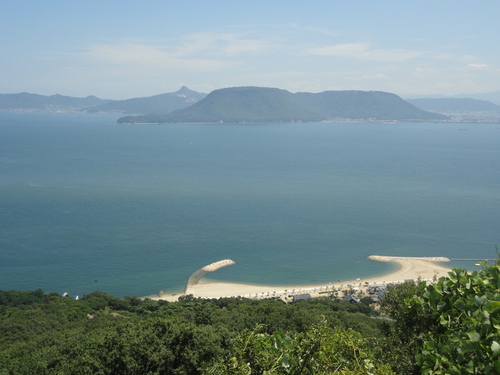
Looking down from the top of Megijima
It also has an impressive network of manmade caves at the top of one of its two steep hills. These caves, most likely made by pirates, were commandeered for the tourist trade many decades ago. Locals began advertising the spot as the former haunt of an ogre band defeated by the boy-hero Momotaro in a popular folktale.

Far below the caves, high stonewalls called ohte protect the village from being ravaged by winter storms.
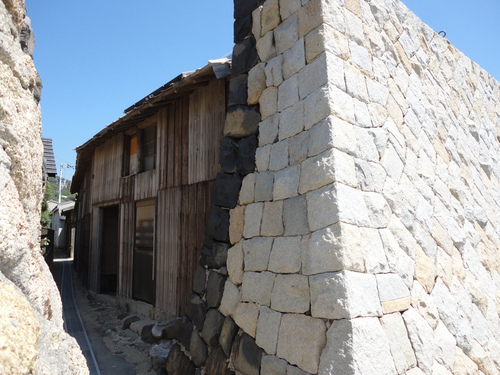
But a walk through the narrow lanes makes it clear that the island community has still been ravaged by the sea of time. Abandoned homes in various stages of decay abound, such as the one below, the roof of which appears to be fastened down with a net of bungee cords.

The Triennale, as you may know, aims to revitalize the islands, using art as a tool to highlight local charms and potential and get people involved. The Oni no Ko (Ogre Kids) Project for 2013 on Megijima is a good example of that involvement.
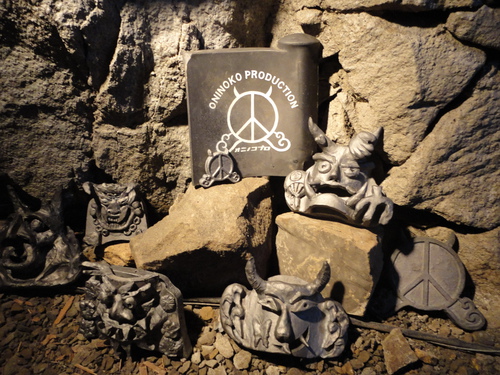
Over 3,000 junior high school students from schools throughout the prefecture made Onigawara (ogre tiles traditionally used to decorate Japanese roofs). The cave is filled with their crazy creations, nicely accented by Philipp Artus’s video installations.
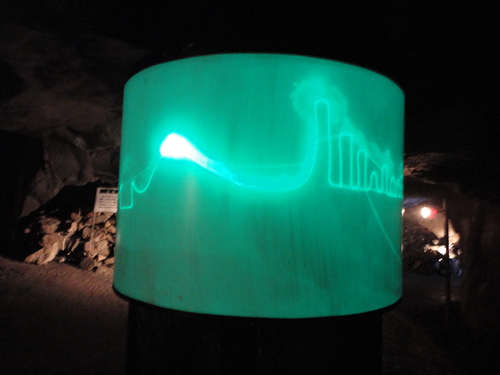
This project alone must be drawing many families to the island to see their kids’ creations. And they are being joined by visitors from all over Japan. (Admission JPY 500. JPY 300 with a Triennale Passport.)

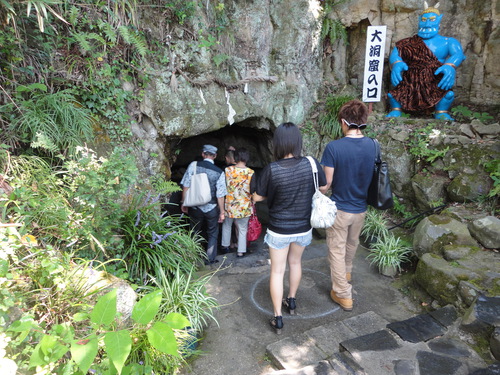
Another popular attraction is MEKON, a new work by Shinro Ohtake (admission JPY500. Free with Triennale Passport). Some people reportedly came to the Triennale just to see his creations. MEKON is a collage of colorful ‘junk’, the detritus of modern life. According to the guides, the work represents ‘life force’ and ‘regeneration’.

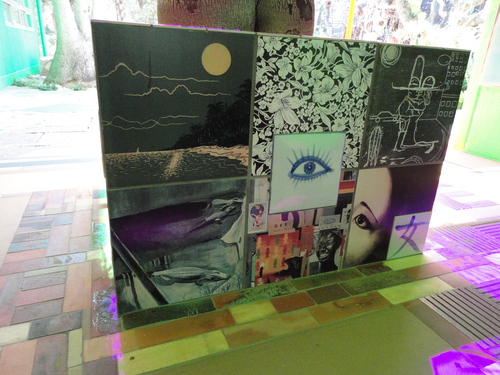
I personally loved the way Ohtake uses vegetation as part of this collage, letting nature take over the work.


I also found it promising to see several new businesses cropping up. One was a diner, serving very simple but affordable fare and run by a local family…

Oni no Daidokoro (Ogres' Kitchen)

Another was this food stall run by Kaji, a young woman from off the island. She had the novel idea of renting wall space on her homemade stall for advertising and using the proceeds to run her business (a pita sandwich and ice cream stall). It will be great if such initiatives continue to grow and spread like the plants taking over Ohtake’s MEKON.
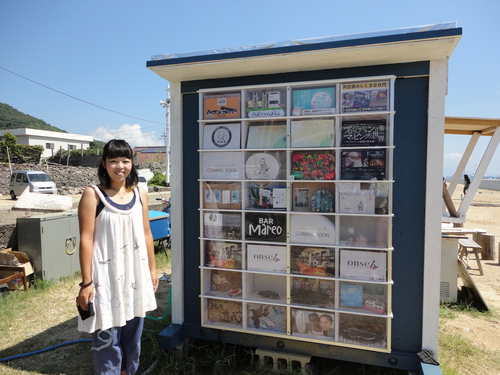
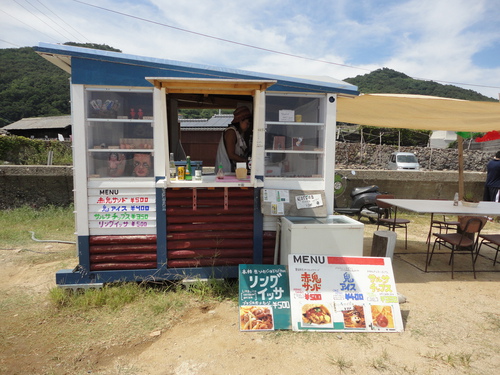
There is plenty more to see on Megijima. For more on the Triennale, see http://setouchi-artfest.jp/en/
Takamatsu Access:
Takamatsu can be reached by direct flights from Tokyo’s Haneda Airport, by express bus from Kansai International Airport (3 hr), and by direct flights from China and Korea. It can also be reached by taking the bullet train to Okayama and changing to the Marine Liner bound for Takamatsu (runs every 1/2 hour; takes 1 hour). For more info see http://wikitravel.org/en/Takamatsu
Posted by cathy at
12:00
│Comments(0)



